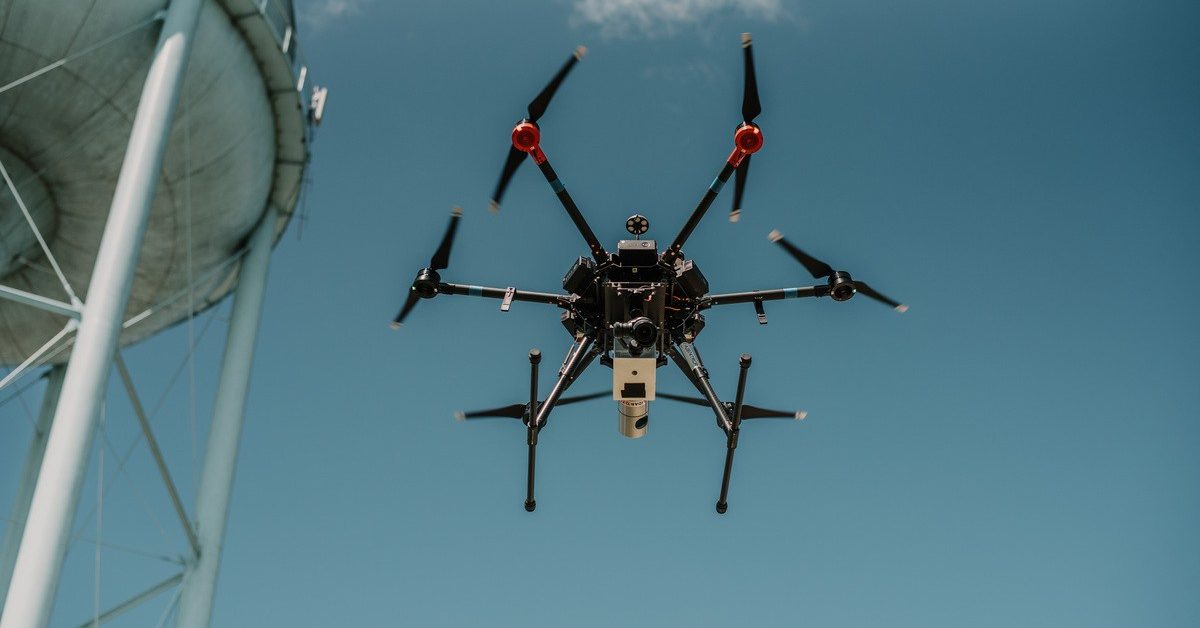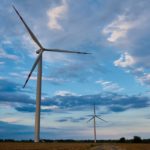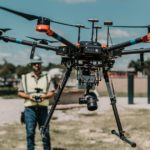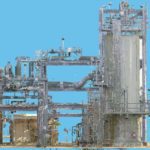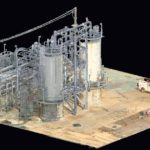Drone inspections are performed in almost every industry that requires visual inspections as part of its maintenance procedures. Aside from the labor cost and infrastructure savings, drone inspections also allow inspectors to collect visual data remotely without having to place themselves in potentially hazardous situations.
The payload on commercial drones can be customized depending on the use case. Commercial drones from makers like DJI, Flyability, and Autel can be outfitted with specialized cameras, additional sensors, GPS, and LiDAR technology, just to name a few upgrades.
With the introduction of high-tech thermal imaging systems that can be integrated with top-of-the-line commercial drones, thermal drones are being increasingly sent out to perform specific tasks and inspections.
In this article, we’ll discuss thermal imaging technology and its various applications, examine the benefits of thermal drone inspections, and deep dive into some of the use cases for thermal drones.
What is Thermal Imaging?
Also known as infrared thermography (IRT), thermal imaging is the process of using thermal cameras to capture images of objects by using the infrared radiation (heat) emitted by these objects. The resulting thermal images (also known as thermograms) depict the spatial distribution of temperature differences in the scene captured by the thermal cameras.
Since infrared radiation (IR) is emitted by all animate and inanimate objects with a temperature above absolute zero, thermal imaging makes it possible to perceive one’s environment even if there is insufficient lighting. Since the amount of IR emitted by an object increases with temperature, thermal imaging allows one to see variations in temperature.
To capture temperature variations, thermal cameras are equipped with sensitive heat sensors that can pick up minute differences in temperature. Thermal cameras are sensitive to wavelengths ranging from approximately 1,000 nanometers to about 14,000 nanometers.
Infrared thermography is an effective form of night vision technology and has many use cases in different industries and professions. Firefighters use infrared thermography to see through thick smoke, localize the base of fires, identify building entry points with relatively low temperatures, and rescue trapped people.
IRT is also widely employed by the military in night combat missions, as it helps frontline troops detect variations in temperature between inanimate objects and enemy forces.
Other widely used applications of infrared thermography include surveillance, building inspections, electrical wiring maintenance, and gas detection.
In recent years, thermal imaging cameras have been integrated with commercial drones in order to perform a wide variety of tasks. Thermal drones equipped with cutting-edge thermal imaging systems can capture different types of images simultaneously. These systems generally carry two cameras: a thermal imaging camera and a standard imaging system.
Using their thermal drone control panel, users can set the isotherms, which are customized temperature settings. Setting the isotherms makes it easier for users to identify high temperature zones. The user also has access to thermal imaging software, which contains features such as real-time heat updates and temperature tracking for specific objects.
Thermal drones are widely employed by different professionals and industries: they’re used by firefighters to gather intel and help control blazes, search and rescue teams looking for wounded or missing people following disasters, and by farmers monitoring crops and grazing herds from the air.
What are the Benefits of Thermal Drone Inspections?
Thermal drone inspections allow inspectors to collect visual data for aggregation and analysis. These types of visual inspections are vital to ensuring the proper maintenance of a company’s assets. By using a drone to collect thermal data, inspectors can avoid placing themselves in dangerous situations when gathering data for analysis.
Listed here are some of the main benefits of leveraging thermal drone inspections:
Faster inspection process
Manual inspections conducted by technicians are often time-consuming and labor-intensive. Case in point: it takes an average of six hours to inspect a cell tower and three to six hours to inspect just one wind turbine.
Using an unmanned aerial vehicle (UAV) equipped with hybrid thermal payloads (i.e. part thermal imaging and part standard imaging), inspectors can significantly reduce their inspection times. UAVs can complete a wind turbine inspection in just 45 minutes and a cell tower inspection in under one hour. This greatly increases inspection frequencies while also reducing average inspection times.
Reduced inspection cost
Manual inspections are more expensive than thermal drone inspections because they require more specialists, equipment, and time to complete. An average of three technicians are needed to complete one wind turbine inspection, while at least two technicians are needed to complete a cell tower inspection.
This skilled labor costs a lot of money, and operators can expect to pay a minimum of $900 for cell tower inspections (with travel and miscellaneous expenses included). Using drones reduces labor and associated costs significantly, with drone inspections lowering the cost of cell tower inspections by as much as 50%.
Using drones rather than human technicians also reduces safety risks since the drones will be performing many of the more dangerous inspections. This greatly reduces insurance rates, leading to even more savings.
No scaffolding
The scaffolding needed to complete manual inspections can be very expensive, with the cost of materials and labor easily reaching hundreds of thousands of dollars. Using thermal drones to perform visual inspections means scaffolding will only have to be constructed once maintenance or repair issues have been identified. This helps companies further reduce their maintenance expenses and labor costs.
Reduced risk
By sending a UAV to perform visual and thermal inspections in situations that would be dangerous for humans, technicians can collect data about the condition of an asset without exposing themselves to potential harm.
When performing wind turbine inspections, for example, drones can inspect the blades, nacelle, hub, and other critical components without the need for technicians to ascend to great heights to example these components closely. This removes the risk of fall-from-height and related accidents.
Improved safety via increased inspections
Given the significantly lower cost of drone inspections, companies can perform preventative maintenance and damage assessments more regularly. This means potentially dangerous problems can be identified and contained more quickly.
To illustrate: thermal imaging technology can be used to assess pressure vessels and identify problems that could lead to life-threatening hazards, like explosions.
Thermal imaging can also be used to inspect all of the electrical and mechanical components of wind turbines, as well as the surrounding electrical system. By identifying hotspots in wind turbines, faulty components can be repaired and fires resulting from sparks are prevented.
Reduced asset downtime
Traditional manual inspections conducted by inspectors and involving the construction of scaffolding could take days to accomplish. During the inspection, the asset is temporarily shut down, which leads to a significant loss of revenue for the operator.
Using thermal drones to perform inspections removes the need to construct scaffolding and greatly reduces the time it takes to complete inspections. This, in turn, significantly reduces the asset’s downtime and positively impacts the operator’s revenue.
More thorough inspections
Drones can enter spaces and capture angles that would be difficult or even dangerous for human technicians. By using drones to enter narrow, confined, or lofty spaces, more thorough and accurate ocular inspections are possible.
For example, Flyability’s ELIOS 2 drone, which is designed to navigate confined spaces, can inspect 40% more of a wind turbine blade’s interior than a human inspector. This leads to more accurate and comprehensive data that can be used for preventative maintenance and damage assessments.
Thermal drones can also enter environments that are too dangerous or unstable for humans. The DJI Matrice 30T, for example, has been used by firefighters to combat wildfires. The Matrice 30T’s thermal drone camera was able to provide actionable data that helped ground teams safely respond to hotspots during the grasslands wildfire in Cleburne, Texas, in 2022.
More actionable data
The payload on drones can be customized depending on the use case. For site documentation projects, for example, the drone can be outfitted with a dual thermal and RGB imaging system, a GPS system, additional sensors, and LiDAR technology.
Equipping your drone with additional technology leads to more varied and actionable data. For industrial inspections, surveying and mapping consulting firms (like Fenstermaker) use the visual data collected by drones to create digital twins. The resulting digital models can be used to enhance the preventative maintenance and damage assessment of industrial assets.
What Can Thermal Drone Inspections Be Used For?
Residential
Using thermal imagining drones to conduct residential inspections allows inspectors to detect defects that would otherwise remain invisible. Examples are insulation problems, moisture inside of walls, water leaks, and faulty wiring. Even the most thorough walk-through inspection could not detect many of these issues.
Home systems and appliances that are not working correctly use more energy than they would when functioning normally. This produces increased heat that can be seen with thermal imaging and it alerts inspectors to potential problems. Normally, these faulty systems would go undetected at this stage.
Catching these problems early prevents serious problems in the future. With early detection, repairs can be made before systems begin failing, so that home conditions never become unsafe, and money is saved over the long run.
Thermal imaging is able to identify problems in a home’s insulation, where heating and cooling are lost. Locating and remedying issues with insulation greatly increases a home’s energy efficiency and saves the homeowner money on heating and cooling bills.
Roof inspections
Drones equipped with thermal and high-resolution cameras can be used to conduct detailed roof inspections. IR cameras can detect wet areas (which retain heat longer than dry areas), making them crucial to detecting leaks and moisture-related structural issues on roofing.
Thermal drone inspections are particularly useful when conducting visual inspections of steep roofs (which are dangerous to walk on) and hard-to-reach sections of the roofing (like the chimney).
Using a drone to capture aerial photos and videos of a roof means the home inspector or roofing contractor doesn’t have to climb the roof and walk across it to make inspections, preventing fall from height accidents.
Electrical inspections
Electrical systems naturally release heat, which allows problems to be identified by thermal imagining technology. Detecting electrical issues early can prevent unplanned outages and hazardous situations. Using thermal drones to complete these inspections will save time and money and identify faults in the electrical system with a high degree of accuracy.
Thermal imaging captures hot spots, which are areas of elevated temperatures that signal malfunctions in the electrical system. Some of the problems that can be detected with thermal imaging include blown fuses and phase imbalances as well as overloaded circuits, failing breakers, and loose connections.
Electrical malfunctions produce increased heat. By detecting heat elevations before components start to burn, major problems can be avoided. This improves both safety and productivity and can save money that would be spent fixing the extensive damage caused by burning.
Electrical problems are very dangerous and can lead to injury or even death. Thermal imaging helps to avoid many of the serious risks of faulty electrical systems. Using drones to perform thermal inspections keeps inspectors far away from potentially hazardous situations.
Agricultural inspections
Agricultural land generally covers many acres, making it very time-consuming and costly to inspect. Drones are able to cover these large land areas very quickly, creating huge savings in time, labor, and money.
Thermal imaging has many unique uses in agricultural inspections. It can spot issues in the irrigation system, such as leaks, pressure problems, and clogged emitters. By repairing irrigation problems early, farmers can reduce wasted water and be sure their crops remain healthy.
Thermal imaging drones can also be used to detect the moisture content of soil and create land maps, both of which can assist in optimizing farming irrigation systems. This will improve the efficiency of irrigation, reducing water wastage and preventing crop failures.
Thermal imagining drones are useful in detecting crop pests and diseases before they become apparent to the naked eye. It does this by capturing tiny differences in the surface temperature of leaves that indicate that crops are in distress. Treating pests and diseases early can prevent catastrophic crop losses that threaten farmers’ livelihoods and food supplies.
Because most agricultural sites cover such a large area of land, manual inspections are often very expensive. Thermal imaging drones can often save farmers significant money by getting the inspection done quickly, with fewer resources. They also save money by reducing water use and by protecting crops.
Solar panel inspections
Solar panels rely on many different components that all must be functioning well. Any small defect may cause the whole panel to stop working. It could even lead to a reverse current which could damage the entire solar planet.
It can be difficult or even impossible to accurately detect malfunctions in solar panel components without the correct technology. Thermal imagining is one technology that is able to precisely detect minor problems before they lead to major breakdowns.
Thermal drone imaging can detect three types of problems in solar panels: module defects, string and system defects, and racking and balance of system defects.
Module defects include dirty or shattered modules, diode failures, junction box heating, hot spots on panel cells, and coating and fogging problems.
String and system defects are wiring issues, such as inverter and fuse failures, frayed cables, and charge controller problems.
Racking and balance of system defects are major issues with module mounting and structure which can cause overheating and lead to irreversible damage to the entire solar panel.
Because solar panels are usually in high locations and often cover a large area, drone inspection is an ideal solution. It can be performed quickly and safely without disrupting operations.
Need Help With an Inspection Project?
Thermal imagining coupled with drone technology has greatly improved safety inspections by making them safer, faster, more accurate, and less expensive.
If you need help with your project, we utilize the latest drone technology to assist with all types of inspections. Our survey and mapping team can help you determine which equipment will best serve your needs.
